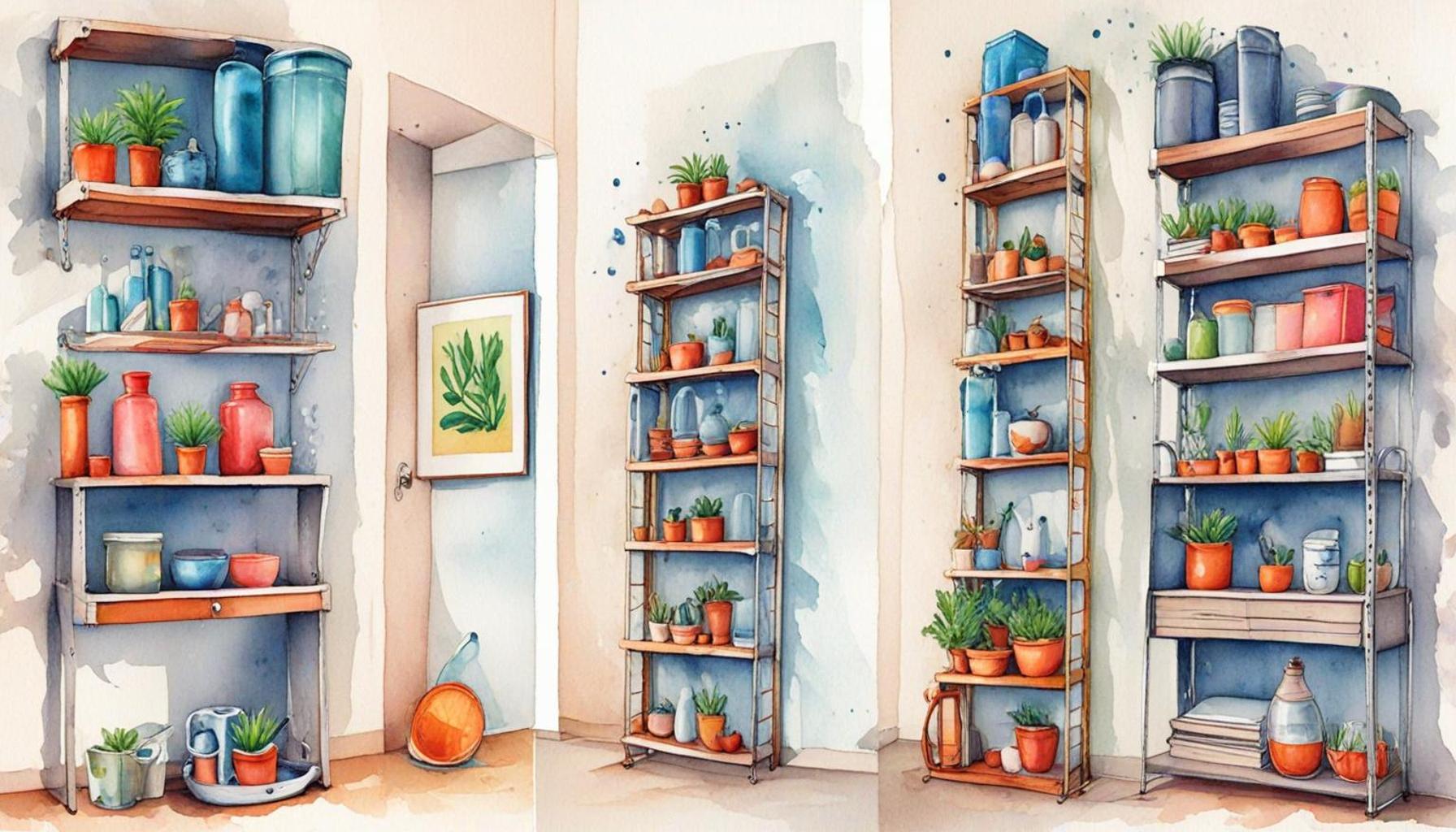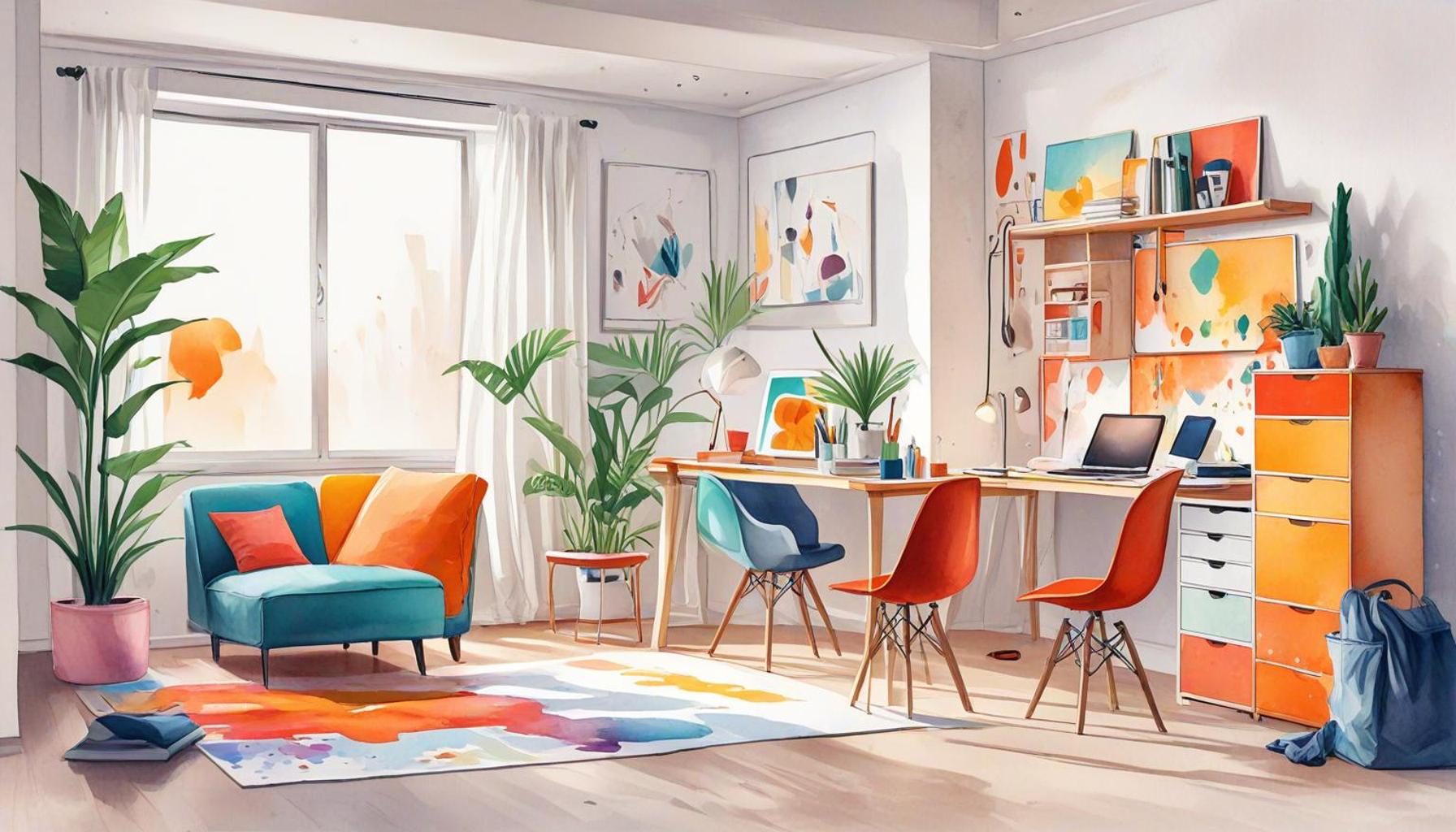The Art of Grouping: Tips for Organizing Items into Categories and Optimizing Space

Discover the Power of Organization
In our fast-paced world, organizing items into categories is crucial for enhancing efficiency and optimizing space. When everything has its rightful place, daily tasks become smoother and clutter is significantly reduced. This art of grouping can transform any environment, from home offices to crowded garages.
Why Grouping Matters
Grouping items not only aids in decluttering but also allows for:
- Improved Productivity: Imagine entering your workspace and immediately finding everything from tools to documents without searching endlessly. This seamless access boosts focus and efficiency, allowing you to accomplish more in less time.
- Enhanced Aesthetics: The visual appeal of an organized space cannot be overstated. A neatly arranged room or office creates a sense of calm and order, contributing to a more pleasant environment that promotes creativity and well-being.
- Increased Functionality: Tailoring your workspace according to your unique needs can significantly enhance your work processes. Whether it’s using a specific corner of your desk for creative brainstorming or organizing your pantry for easy meal prep, a functional space encourages a productive workflow.
Understanding how to categorize your belongings can lead to newfound space and comfort. For instance, organizing your digital files into folders marked “work,” “personal,” and “projects” can streamline your online activities. The ease of finding important documents quickly can save precious time.
Practical Applications
Consider everyday examples:
- Organizing your closet by season or color not only helps you choose outfits swiftly but also promotes a greater appreciation for your wardrobe. For instance, summer clothes can be stored out of sight, creating more space for winter gear, making seasonal transitions less cumbersome.
- Creating zones in your office for different tasks—like separating your research area from your correspondence space—encourages a clear mental distinction between different types of work, which can bolster your overall productivity.
- Sorting kitchen supplies into categories such as baking, cooking, and storage can make cooking enjoyable rather than a frantic scramble for utensils and ingredients. Visualize having all your baking tools together, allowing you to focus entirely on your recipes without interruption.
By embracing the art of grouping, you can create a harmonious living or working space while maximizing your resources. The benefits extend beyond mere organization; they also foster mental clarity, reduce stress, and enhance your overall quality of life. Ready to dive deeper into these practical tips? Let’s explore the world of organization together, unlocking the full potential of every room and every task at hand.

DISCOVER MORE: Click here to enhance your space
Mastering the Techniques of Grouping
To truly harness the power of organization, understanding practical techniques for grouping items is essential. These methods not only smooth your day-to-day processes but also enhance the overall functionality of your space. Implementing thoughtful categories for your belongings can transform chaos into order, offering tangible benefits in various settings—from your kitchen to your workshop.
Identify Logical Categories
The first step in the art of grouping is recognizing which categories will serve you best. Begin by assessing the types of items you possess and consider how you interact with them. Here are some logical categories that typically yield efficient organization:
- Function: Group items by their purpose. For instance, kitchen tools can be divided into cooking, baking, and prep categories, ensuring that the supplies you need are always within arm’s reach.
- Frequency of Use: Identify items you use regularly versus those that are seldom needed. Frequently used items should be easily accessible, while seasonal tools or decorations can be stored away until required.
- Size: Organizing by size can be particularly effective for items like files and storage boxes. For example, stacking similar-sized containers in a pantry maximizes vertical space while keeping everything visible and organized.
- Color: While this may seem more aesthetic, grouping by color can make items visually pleasing and simplify selection—especially useful in closets or craft rooms.
Utilize Space Efficiently
After defining your categories, the next step is optimizing your space according to these groupings. Efficient organization isn’t just about where things go; it’s also about how to best utilize all available areas. Here are some strategies to consider:
- Vertical Space: Make use of wall-mounted shelves or hooks to free up floor space, especially in smaller areas. Items such as books, tools, or even decorative pieces can flourish on well-placed shelving.
- Multi-Functional Furniture: Invest in furniture that serves dual purposes; for instance, ottomans with storage compartments or coffee tables that can hide away board games or magazines.
- Clear Containers: Use bins or baskets to segregate groups while ensuring visibility. Clear containers allow you to see what’s inside at a glance, saving time when searching for specific items.
Understanding how to group efficiently can greatly impact the usability of your space. By evaluating both the categories that serve your needs and the best ways to implement these groupings, you will be able to experience an invigorating transformation in your environment. The appeal of an organized space is not just in aesthetic beauty; it encapsulates the essence of ease, clarity, and mental tranquility. Travel with us as we dive deeper into advanced grouping strategies designed to revolutionize your approach to organization.
| Category | Key Features |
|---|---|
| Digital Organization | Utilizes software to create templates for file management. |
| Physical Space Optimization | Incorporates shelving and compartmentalization for better layout. |
| Visual Categorization | Enhances aesthetic appeal while improving functionality. |
| Time Management | Consolidates tasks by grouping similar activities, saving time. |
Understanding the significance of effective categorization is pivotal in embracing the art of grouping. The technique of digital organization is advancing with cloud storage and organizational apps, providing a streamlined approach that not only saves physical space but also enhances accessibility. On the other hand, physical space optimization can transform cluttered areas into well-defined zones that allow for easy navigation.Moreover, employing visual categorization can make everyday tasks more enjoyable and effective by incorporating color-coded systems or labeled boxes. This contributes to creating an environment that ignites creativity. Essential to this process is time management, as grouping similar tasks can drastically reduce wasted time, ultimately leading to increased productivity. Delving deeper into these categories can unearth strategies that are easy to implement and yield impressive results. By mastering the art of grouping, you open doors to a more organized and harmonious space, whether it be digitally or physically.
DISCOVER MORE: Click here to learn about intentional design
Advanced Grouping Strategies for Optimized Organization
As we delve deeper into the art of grouping, it’s essential to explore advanced strategies that amplify your organizational efforts beyond basic categorization. Once you’ve established a foundation of logical categories and optimized space, these techniques will enhance functionality and aesthetic appeal, facilitating a seamless environment.
Assess and Prioritize
One compelling approach to group organization is the practice of assessing and prioritizing items within your categories. This method focuses on identifying the most essential items within each group and allocating prime space accordingly.
- High-Traffic Zones: For frequently used items, place them within arm’s reach. Think about your kitchen: everyday dishes should be easily accessed, while fine china can be stored higher up or in less accessible cabinets.
- Dead Space Utilization: Examine corners, nooks, and crannies that often go unnoticed. A corner shelf or lazy Susan can help maximize often-overlooked areas, ensuring every inch of space serves a purpose.
Incorporate Labels for Clarity
Labeling is a simple yet effective technique that enhances the grouping experience. By clearly identifying categories, you minimize confusion and streamline the retrieval process.
- Consistent Labeling: Use the same font and size for labels across similar items, maintaining a uniform look. This consistency not only improves aesthetics but also reinforces clarity.
- DIY Labels: Get creative with your labels—consider using chalkboards for a rustic look or elegant tags for a touch of class, particularly in craft or gift-wrapping areas.
Use Technology to Your Advantage
In our tech-savvy world, leveraging technology can enhance your grouping methods significantly. Several apps and devices cater to organization, enabling you to maintain and track your grouped items with ease.
- Inventory Apps: Use mobile applications to catalog your items within each category. This allows for quick searches and inventory checks without rummaging through multiple storage spots.
- Smart Storage Solutions: Incorporate smart home devices that help you manage your space. For example, some cabinets now come equipped with sensors that notify you of inventory levels, making adjustments and reordering more manageable.
Evaluate and Revise Periodically
Even the most carefully constructed organizational system can benefit from periodic evaluation and revision. As your lifestyle and needs change, so too should your grouping strategies.
- Seasonal Checks: Consider assessing your spaces at the change of each season. Swap out seasonal decorations and items, ensuring that only relevant categories remain easily accessible.
- Annual Review: Once a year, conduct a thorough inventory review—discard or donate items that no longer serve a purpose. This helps keep your categories relevant and your space optimized.
Utilizing these advanced grouping strategies can redefine how you approach organization, further enhancing the effectiveness of your space management. By making conscious decisions to assess, label, and leverage technology, you not only cultivate an organized environment but also inspire a sense of peace and control over your surroundings. The world of organization is ever-evolving, and embracing these techniques may be the key to unlocking your optimal space efficiency.
DISCOVER MORE: Click here to learn about mindful consumption
Conclusion: Mastering the Art of Grouping for Optimal Space Utilization
In the pursuit of optimal organization and space management, mastering the art of grouping is imperative. By embracing advanced grouping strategies, such as assessing and prioritizing items, incorporating clear labeling, leveraging technology, and committing to periodic evaluations, anyone can transform cluttered chaos into a harmonious and functional environment. The ultimate goal is not merely to arrange items neatly but to create a space that reflects your lifestyle and fosters productivity.
Consider the psychological impact of your surroundings; an organized space not only enhances aesthetics but also nurtures mental clarity and tranquility. As we embark on the journey of organizing our homes and offices, remember that this is an ongoing process tailored to your changing needs. Seasonal checks and annual reviews allow you to adapt your grouping strategies, ensuring they remain relevant and efficient.
Moreover, the integration of smart storage solutions and inventory apps serves as a bridge between traditional organizing methods and the convenience of modern technology, making it easier than ever to maintain an optimized space. As you implement these tips, think of grouping as an evolving art form that enhances both functionality and beauty in your personal spaces.
Take the time to explore various grouping techniques tailored to your specific circumstances, and witness how the simple act of organizing can lead to a newfound sense of peace and control. Ultimately, the art of grouping is not just about making space—it’s about making room for a more fulfilling, streamlined life.


